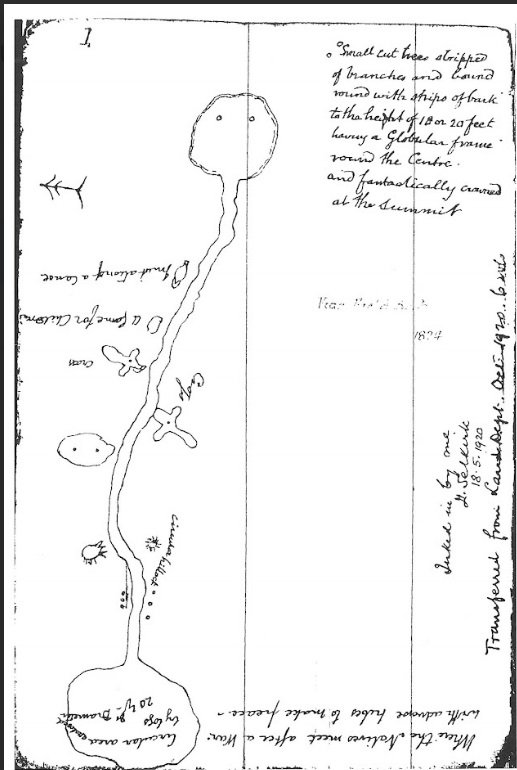Redcliffe’s first inhabitants were the Ningi Ningi people whose homeland encompassed the peninsula and coastal areas along Pumicestone Passage. They left behind several traces of their occupation, among which were ceremonial sites, such as the Kippa-Ring bora ring and many shell middens. Examination of the contents of middens found at Toorbul suggests that Ningi Ningi populations had probably lived, hunted and foraged in the region for several thousand years. Being coastal people, their diet included fish, dugongs and shellfish, particularly oysters, as evidenced by the quantity of oyster shells found in the middens. They also hunted land animals and birds for both meat and skins.
The arrival of Matthew Flinders at Woody Point in 1799 heralded the beginning of the end for this millennia-old existence. He and his party found there an Aboriginal dwelling place and a fishing net – which he removed, leaving a hatchet in its place as a ‘trade’ – and parts of a stringybark canoe, although he did not encounter any people.

Thus, detailed observation of the Indigenous residents of Redcliffe and their way of life did not occur until the arrival of the Amity, with surveyor Robert Hoddle on board, who reported on the Ningi Ningi and their interactions with the new Redcliffe settlement. He observed that they were, “a fine-looking race of men…their skins being much scarified…a badge of distinction amongst them.” They were “in general” very friendly although they were careful to keep their women apart from the whites. They were eager to acquire goods from the settlers, being particularly interested in handkerchiefs and hats and, especially, tomahawks (Flinders’s hatchet perhaps having made a lasting impression).
They constructed bark huts to house family groups and in which to keep their possessions, such as “fishing nets and baskets, spears and implements of war”. The fishing nets, Hoddle declared “would not have discredited a European”. Hoddle observed that “nature supplies their few wants in abundance”, which accurately summed up the Ningi Ningi relationship with the land and its bounty and underlines the disturbance about to be perpetrated on the balance between people and environment.
When the Redcliffe penal colony was abandoned, the Ningi Ningi were once more left in possession of their ancestral lands but it was a brief reprieve. Within 40 years, European pioneers once more settled on the peninsula, and this time they stayed.
This year, during Redcliffe’s bicentennial commemorations of the arrival of the Amity, let us pause to remember those who preceded us and, for thousands of years, called this home.
Read more stories from our Redcliffe Guide print magazine here:
